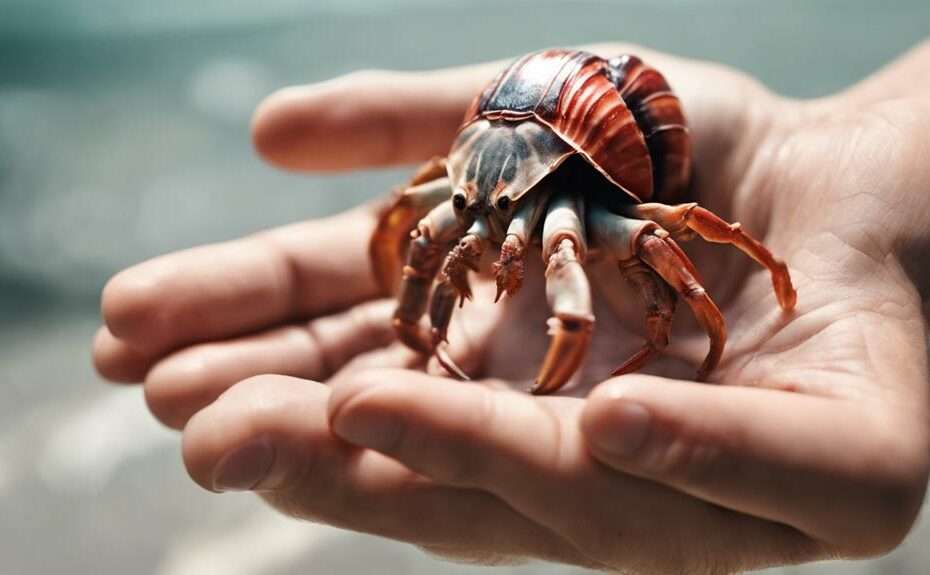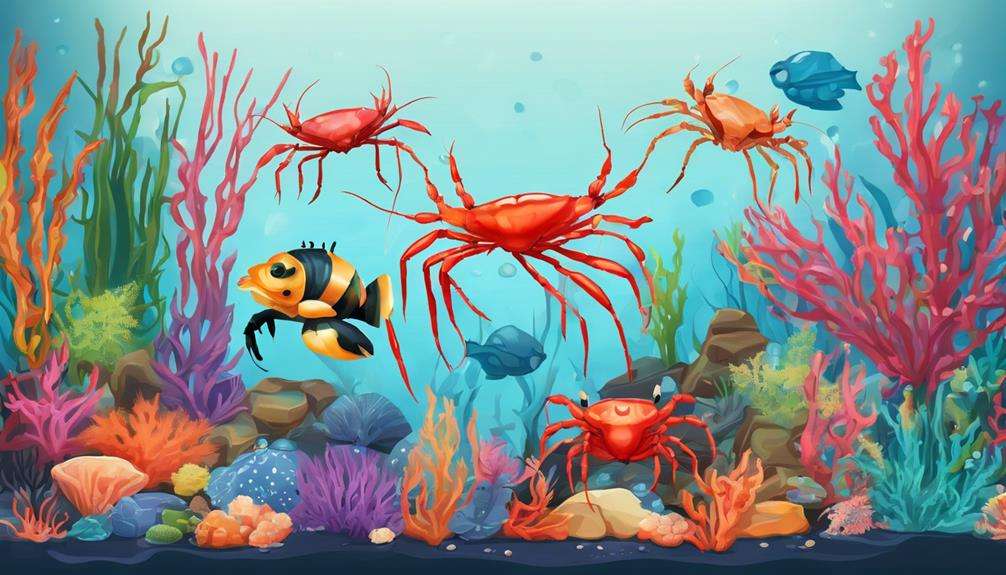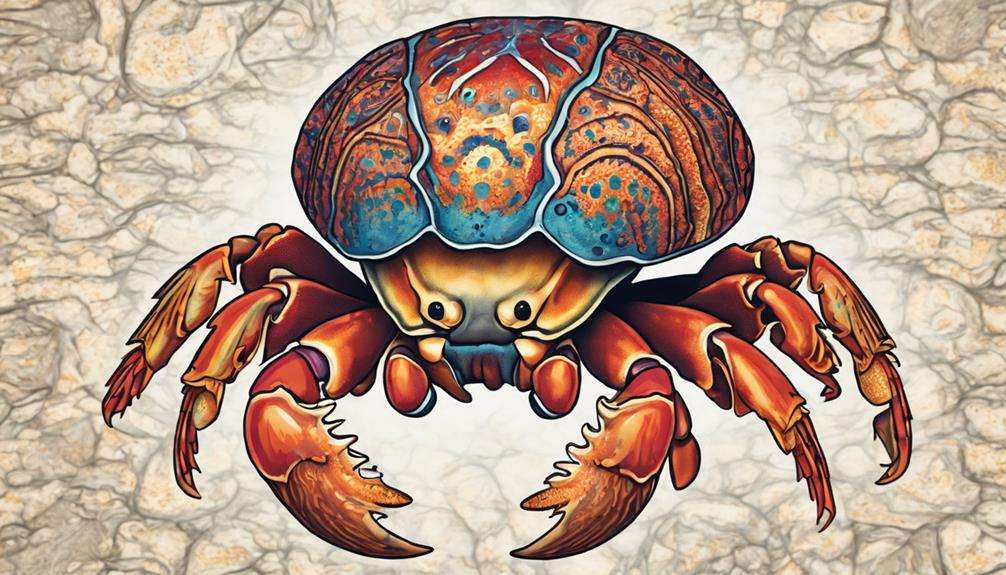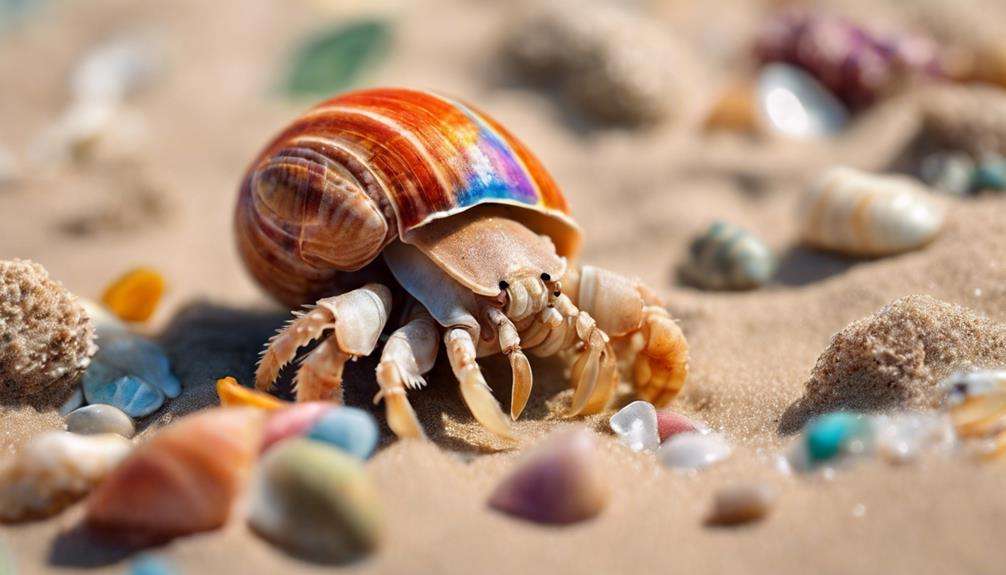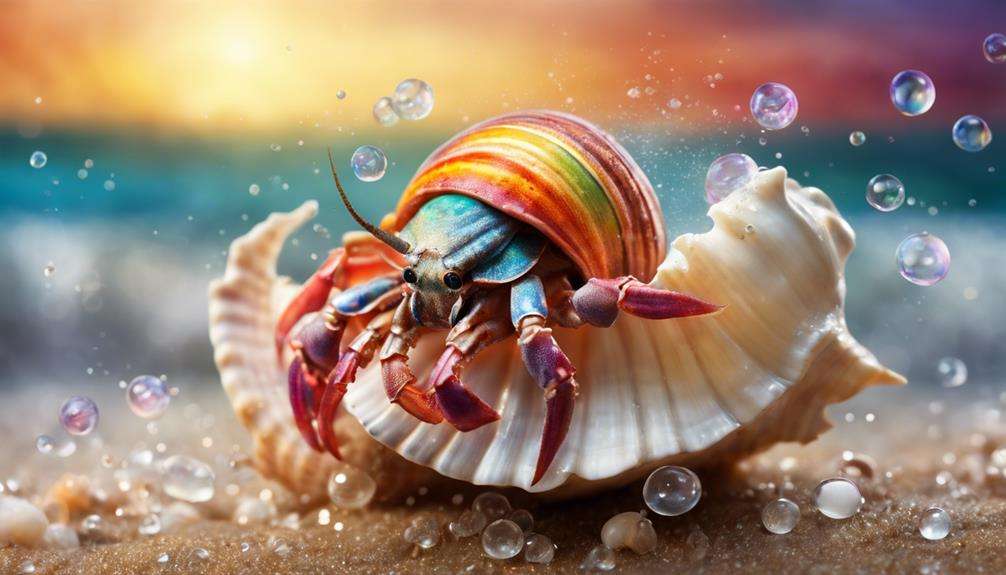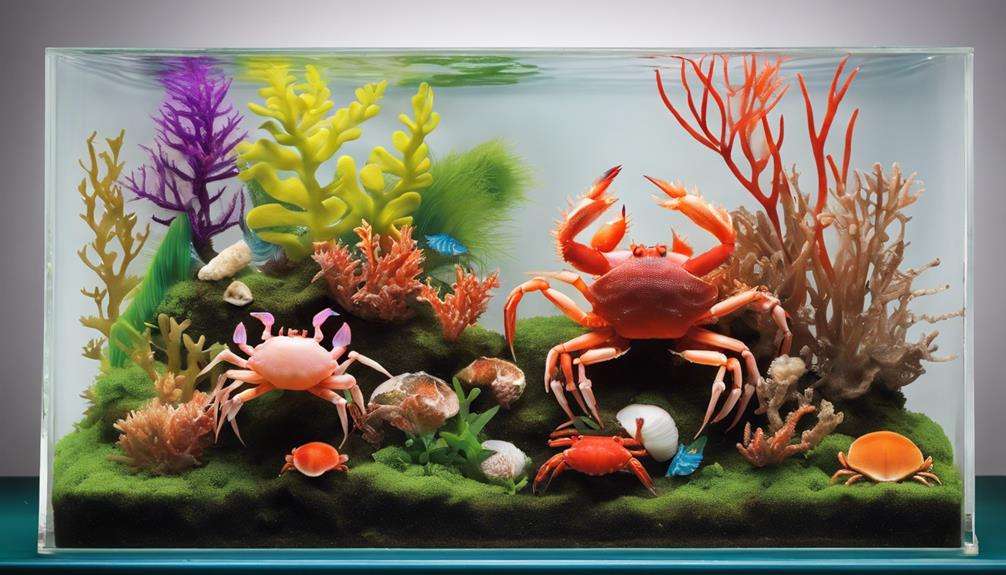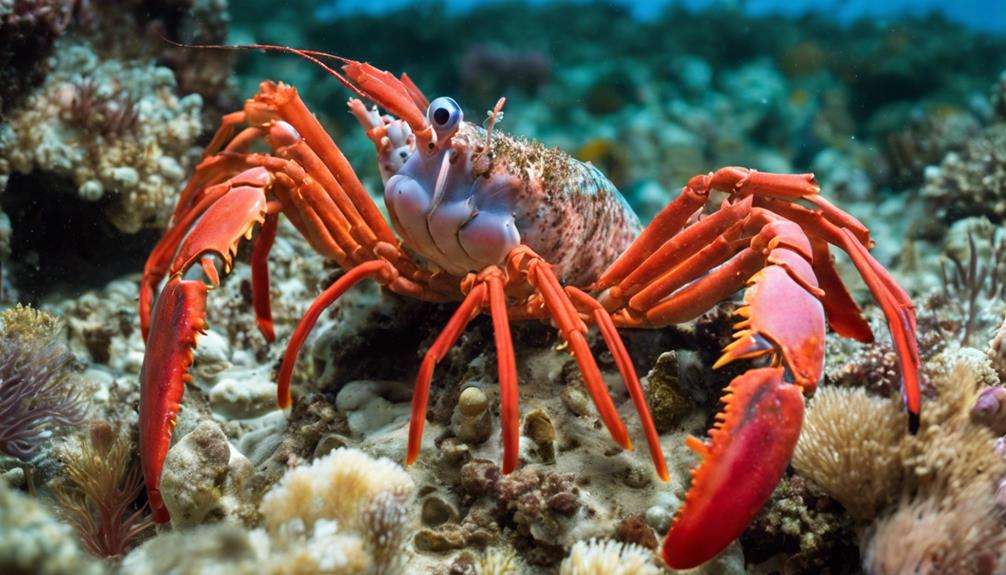When it comes to handling your pet crustaceans, remember the old saying, 'Handle with care.' The delicate nature of these creatures calls for a gentle touch and a keen understanding of their behaviors.
But why is safe handling so crucial for them? Well, the intricate world of pet crustaceans holds many secrets that unfold when you grasp the importance of their well-being.
Stay tuned to uncover the mysteries behind safe handling practices for these unique aquatic companions.
Key Takeaways
- Minimize stress and harm by following safe handling practices
- Prevent health hazards like injuries, aggression, and disruptions
- Ensure well-being and longevity through proper handling techniques
- Maintain trust, comfort, and safety with a serene tank environment
Importance of Safe Handling Practices
Safe handling practices for pet crustaceans are imperative to minimize stress and potential harm during interactions. Proper handling techniques play a vital role in reducing defensive or aggressive responses from crustaceans. Due to their instinctual nature and limited learning capacity, understanding safe handling practices is crucial when caring for these animals.
Key aspects of safe handling practices for pet crustaceans include visual inspection, tank transferring, and separating individuals when necessary. Visual inspection allows you to assess the health and condition of the crustaceans, ensuring any issues are promptly addressed. When transferring crustaceans between tanks, it's essential to handle them carefully to avoid causing stress or injury. Additionally, separating ovigerous females is important to safeguard their well-being and that of their offspring.
Risks of Improper Handling
Improper handling of pet crustaceans poses significant risks to their health and well-being. Stress, injuries, and potential aggression are common consequences of mishandling these creatures.
Such actions can disrupt their natural behaviors, leading to long-term health issues and decreased lifespans.
Handling-Related Health Hazards
Handling pet crustaceans incorrectly poses significant risks to their health and well-being, including decreased immune function and susceptibility to diseases. Improper handling can lead to physical injuries such as limb damage, shell cracks, or stress-related behaviors, further compromising their health.
Inadequate handling techniques can disrupt molting processes, essential for growth and development. Failure to provide a suitable environment during handling may result in complications, impacting their overall well-being.
Aggressive handling can trigger defensive reactions in crustaceans, increasing the risk of bites, pinches, or other defensive behaviors. It's crucial to handle pet crustaceans with care and precision to maintain their health and ensure they thrive in a freshwater environment.
Impact on Crustacean Welfare
To ensure optimal welfare for pet crustaceans, proper handling techniques must be meticulously observed to prevent stress, injuries, and potential fatalities. Improper crustaceans handling can have severe consequences, including physical harm such as limb damage or shell injuries due to rough handling.
Inadequate care and handling practices can also disrupt crucial molting processes necessary for growth and overall health. Mishandling may trigger defensive behaviors in crustaceans, leading to pinching or aggression towards handlers.
It's imperative to understand that safe handling practices are essential for the well-being and longevity of pet crustaceans. By adhering to proper handling protocols, you can significantly reduce the risks associated with mishandling and ensure a healthier environment for your pet crustaceans.
Safety Precautions for Crustaceans

When handling pet crustaceans, ensure proper tank conditions and adhere to established handling procedures to minimize stress and potential harm to the animals.
Maintaining a suitable environment and following safe handling protocols are essential in promoting the well-being of crustaceans in captivity.
Proper Tank Conditions
Maintaining optimal tank conditions is imperative for ensuring the safety and well-being of pet crustaceans. To provide a suitable environment for your crustacean pets, consider the following:
- Water Quality: Regularly test the water parameters such as pH, ammonia, nitrite, and nitrate levels to ensure they're within the appropriate range to prevent stress and illness.
- Temperature Control: Maintain the water temperature within the recommended range for your specific crustacean species to support their physiological functions and overall health.
- Hiding Spots: Include shelters or hiding spots in the tank to allow your crustaceans to feel secure and reduce their stress levels, promoting a healthier environment for them.
Handling Procedures
For safe handling of pet crustaceans, adherence to proper procedures is crucial to minimize stress and potential harm to both the crustaceans and the handler. Safe handling procedures for crustaceans involve visual inspection, tank transferring, and separating to prevent stress and injury.
It's essential to understand when and how to handle crustaceans to avoid triggering aggressive or defensive reactions. Ovigerous females, in particular, should be handled with care to ensure the safety of both the crustacean and the handler.
Using tongs or gloves when handling crustaceans can help prevent pinching and potential harm. Different crustaceans such as crabs, crayfish, hermit crabs, and dwarf shrimp require specific handling techniques tailored to each species for safe interaction and minimal stress.
Proper Techniques for Holding Crabs
To handle crabs properly, grasp them gently by the back of their shell to prevent limb injuries. When holding a crab, it's crucial to follow specific techniques to ensure the safety and well-being of the crustacean:
- Use of Tools: Consider using tongs or gloves when handling crabs to prevent getting pinched by their claws. This can help minimize the risk of injury to both the crab and the handler.
- Avoid Stressful Handling: Refrain from picking crabs up by their legs or antennae as this can cause them stress and potential harm. By holding them gently by the shell, you can reduce the likelihood of causing unnecessary stress to the crab.
- Even Weight Distribution: Support the crab's weight evenly when holding them to prevent any damage to their exoskeleton. Proper support can help maintain the integrity of the crab's body structure and minimize the risk of injury during handling.
Ensuring Comfort During Handling
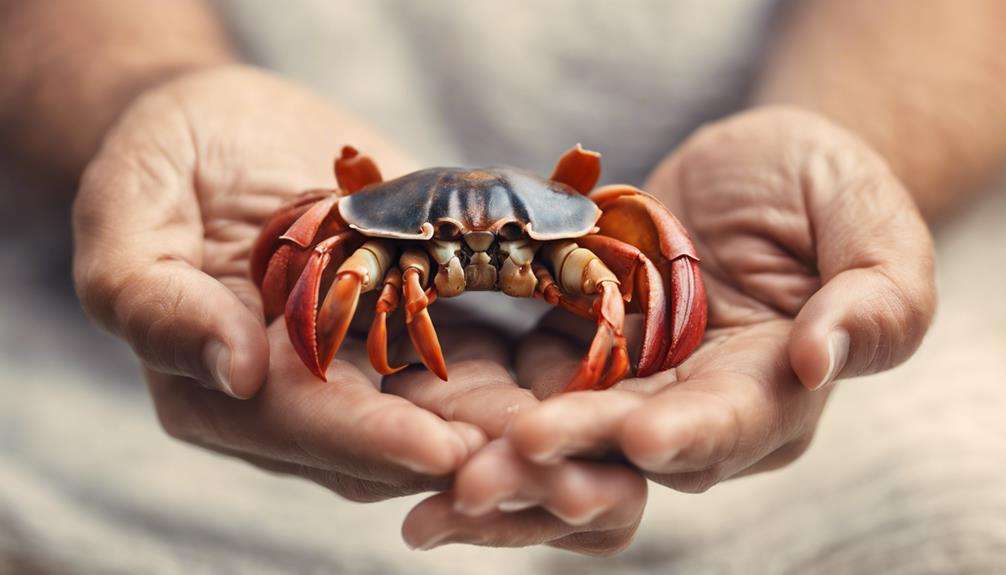
Ensuring the comfort of pet crustaceans during handling is essential for promoting their well-being and minimizing stress.
When handling pet crustaceans, one critical step to ensure their comfort is to wash your hands thoroughly before and after each interaction. This simple practice helps prevent the transfer of harmful chemicals, oils, or residues that may be present on your skin and could negatively affect the crustaceans.
Additionally, clean hands reduce the risk of introducing any potential pathogens that could harm the delicate creatures.
Building Trust With Pet Crustaceans
When handling pet crustaceans, consistent and gentle interactions are key to building trust and minimizing stress. Establishing trust with crustaceans is crucial for their well-being and enhancing the bond between pet owners and their aquatic companions.
Here are three essential strategies to help you build trust with your pet crustaceans:
- Establish a Routine: Creating a predictable environment for crustaceans can help them feel secure and less defensive. Consistency in handling practices and providing a stable routine can aid in reducing stress levels and fostering trust.
- Slow Movements: Moving slowly and deliberately around crustaceans can help them feel more at ease. Quick movements may startle or stress them out, hindering the trust-building process. By maintaining a calm and gentle approach, you can build a stronger bond with your pet crustaceans.
- Minimize Disturbances: Avoiding sudden noises or vibrations in the crustaceans' environment is essential for their trust and comfort. Limiting disruptions can create a serene atmosphere, promoting a sense of security and trust among pet crustaceans.
Frequently Asked Questions
Why Should We Care About Crustaceans?
You should care about crustaceans because they play a vital role in marine ecosystems. Crustacean conservation is crucial for biodiversity and ecological balance. Understanding their importance helps in preserving these species for future generations to appreciate.
Can Pet Crabs Be Handled?
When handling crabs, always remember – slow and steady wins the race. Be cautious to prevent stress or harm. Use proper tools like tongs or gloves to avoid pinches. Limit handling to essential tasks.
Are You Supposed to Handle Hermit Crabs?
In Crab Care, you are advised not to handle hermit crabs frequently. Doing so can stress them, disrupt their behaviors, and harm their delicate exoskeletons. It's best to observe them in their habitat.
Can You Keep Crustaceans as Pets?
You can keep crustaceans as pets, but it's essential to understand their specific needs. Crustacean habitats require a moist environment, adequate space, and proper nutrition. Research the species you're interested in to create a suitable habitat.
Conclusion
In conclusion, safe handling of pet crustaceans is essential to their well-being and minimizing stress. Remember, 'an ounce of prevention is worth a pound of cure' when it comes to caring for these delicate creatures.
By following proper techniques, precautions, and building trust, you can ensure a positive and enriching experience for both you and your pet crustaceans.
